Is cure for diabetes a near future possibility


There are three main types of diabetes: type 1, type 2, and gestational diabetes, with other subtypes and related conditions, like prediabetes.
Here's a more detailed breakdown:
Main Types of Diabetes:
Type 1 Diabetes:
The body's immune system mistakenly attacks and destroys the insulin-producing cells in the pancreas.
Type 2 Diabetes:
The body either doesn't produce enough insulin or can't use it effectively (insulin resistance).
Gestational Diabetes:
Develops during pregnancy, often disappears after childbirth, but increases the risk of developing type 2 diabetes later in life.
Other Related Conditions and Subtypes:
Prediabetes: Blood sugar levels are higher than normal, but not high enough to be diagnosed as diabetes. It increases the risk of developing type 2 diabetes.
Maturity-Onset Diabetes of the Young (MODY): A group of genetic conditions that cause diabetes, often diagnosed in childhood or early adulthood.
Latent Autoimmune Diabetes in Adults (LADA): A type of diabetes that is similar to type 1 diabetes, but develops more slowly.
Steroid-induced diabetes: Diabetes that can be caused by taking certain medications, such as steroids.
Cystic fibrosis-related diabetes: Diabetes that can develop as a complication of cystic fibrosis.
Neonatal diabetes: A rare form of diabetes that can occur in newborns.
Type 1 Diabetes:
No cure yet: Type 1 diabetes is an autoimmune condition where the immune system destroys insulin-producing beta cells in the pancreas. While there is no cure, treatments like insulin therapy, continuous glucose monitors (CGMs), and automated insulin delivery systems (artificial pancreas) have greatly improved management.
Research focus: Scientists are exploring:
Beta cell regeneration: Using stem cells to create new insulin-producing cells.
Immunotherapy: Preventing the immune system from attacking beta cells.
Islet cell transplantation: Transplanting healthy islet cells, though this requires immunosuppression.
Gene editing: Technologies like CRISPR are being investigated to correct genetic defects.
Type 2 Diabetes:
Reversible in some cases: Type 2 diabetes, often linked to lifestyle factors, can sometimes be reversed through significant weight loss, dietary changes, and exercise. However, this is not a cure, as the condition can return.
Research focus:
Improved medications: New drugs like GLP-1 receptor agonists and SGLT2 inhibitors help manage blood sugar and reduce complications.
Metabolic surgery: Procedures like bariatric surgery can lead to remission in some patients.
Targeted therapies: Researchers are studying ways to restore insulin sensitivity and improve pancreatic function.
Near-Term Possibilities:
Artificial pancreas systems: These are already in use and improving, offering better blood sugar control.
Stem cell therapies: Clinical trials are ongoing, with some promising results in generating insulin-producing cells.
Immunotherapy for Type 1: Early-stage trials are exploring ways to stop the autoimmune attack on beta cells.
Challenges:
-Complexity of diabetes: Both types involve multiple genetic, environmental, and immune factors, making a single cure difficult.
Long-term safety: New treatments like stem cell and gene therapies require extensive testing to ensure safety and efficacy.
Conclusion:
While a complete cure for diabetes is not yet available, research is progressing rapidly. Breakthroughs in stem cell therapy, immunotherapy, and gene editing offer hope for future cures. In the meantime, advancements in technology and medications are significantly improving quality of life for those with diabetes. Stay updated on clinical trials and consult healthcare providers for the latest treatment options.
Tests for diabetic neuropathy


Testing for Diabetic Neuropathy
Monofilament testing: A soft nylon fibre is brushed on the skin to test touch sensitivity
Sensory testing: A non-invasive test that measures how nerves respond to changes in temperature and vibration
Nerve conduction studies: Measures how quickly electrical signals move through nerves in the arms and legs
Electromyography (EMG): Also known as needle testing, this test measures electrical discharges in the muscles
Autonomic testing: Tests how blood pressure changes in different positions and whether sweating is normal
Diabetes foot exam: A visual assessment of the feet for injuries or issues, and a check for numbness
Skin biopsies: Evaluates cutaneous nerve innervation
Nerve and muscle biopsies: Evaluates nerves and muscles for histopathological evaluation
Lumbar puncture: Tests cerebrospinal fluid for inflammation
Other tests that may be performed include: Ultrasound and Electrocardiography.
Laboratory tests may include:
Serum glucose
Haemoglobin A1c
Complete blood count
Erythrocyte sedimentation rate
Serum electrophoresis
Vitamin B1, B6, and B12 levels
Use of Nano particles in cancer.

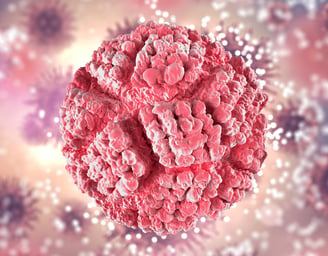
Quantum dot nanoparticles have been used in photodynamic therapy; a therapeutic technique used in the treatment of cancer.
Physicians have utilized quantum dot nanoparticles to activate photosensitizing agents such as reactive oxygen species on tumor cells thus leading to the programmed death of these cells.
Moreover, quantum dots nanoparticles have also been applied in the diagnosis of cancer through utilization of biosensing technique, whereby chemical biomarkers of different tumors such as prostrate surface antigen in prostate cancer are detected.
This technique has facilitated high-tech theragnostic by giving physicians and oncologists valuable information on the type of tumor they are dealing with. present applications of quantum dots in bioimaging and diagnosis
Nanoparticles are being explored for cancer therapy to improve drug delivery, enhance treatment efficacy, and minimize side effects by targeting tumor cells and delivering drugs or other therapeutic agents with precision.
Here's a more detailed look at the use of nanoparticles in cancer therapy:
1. Targeted Drug Delivery:
Enhanced Efficacy:
Nanoparticles can be designed to encapsulate drugs and selectively deliver them to tumor tissues, improving the effectiveness of cancer treatments.
Reduced Side Effects:
By targeting tumor cells, nanoparticles can minimize the exposure of healthy tissues to chemotherapy, reducing potential side effects.
Passive and Active Targeting:
Nanoparticles can exploit the "enhanced permeability and retention (EPR) effect" in tumor tissues for passive targeting, or can be engineered with specific ligands or antibodies for active targeting of tumor cells.
Examples:
Nanoparticles can be used to deliver chemotherapeutic drugs, gene therapies, or other therapeutic agents to tumor sites.
Cell Membrane-Coated Nanoparticles (CMCNPs):
These nanoparticles mimic the cell membrane, allowing them to overcome biological barriers and improve therapeutic efficacy.
2. Imaging and Diagnosis:
Tumor Imaging:
Nanoparticles can be used as contrast agents in medical imaging techniques like MRI to visualize tumors and monitor treatment response.
Early Cancer Detection:
Nanotechnology can enable the development of nanoprobes and nanobiosensors for early cancer detection by identifying specific biomarkers.
3. Synergistic Therapies:
Combination Therapies:
Nanoparticles can be used in combination with other cancer treatments, such as chemotherapy, immunotherapy, and radiation therapy, to enhance their effectiveness and reduce toxicity.
Photothermal Therapy:
Nanoparticles can be used to convert light into heat, leading to the destruction of cancer cells through hyperthermia.
Radiation Sensitization:
Nanoparticles can enhance the effectiveness of radiation therapy by increasing the sensitivity of tumor cells to radiation.
4. Overcoming Drug Resistance:
Reversal of Multidrug Resistance: Nanoparticles can be designed to target mechanisms of cancer drug resistance, such as drug efflux transporters, defective apoptotic pathways, and hypoxic environments, to overcome drug resistance.
5. Nanomaterials Used in Cancer Therapy:
Organic and Inorganic Nanoparticles:
A wide range of nanomaterials, including polymeric nanoparticles, liposomes, quantum dots, carbon nanotubes, and metallic nanoparticles (gold and silver), are being explored for cancer therapy.
Hybrid Nanoparticles:
Combining different nanoparticles can lead to enhanced therapeutic properties.
Gut health and immunity.


Gut health and immunity are intricately linked, with the gut microbiome playing a crucial role in regulating the immune system and overall health.
A healthy gut microbiome, rich in beneficial bacteria, helps train and regulate the immune system, while an unhealthy gut can lead to immune dysregulation and increased susceptibility to various diseases.
Here's a more detailed explanation:
The Gut Microbiome and Its Role:
Definition:
The gut microbiome refers to the trillions of microorganisms, including bacteria, fungi, and viruses, that live in the digestive tract.
Immune System Training:
The gut microbiome interacts with immune cells in the gut, helping them differentiate between harmful and beneficial substances, and learn to respond appropriately to threats.
Gut-Associated Lymphoid Tissue (GALT):
About 70% of the body's immune cells are located in the gut, within the GALT, which is responsible for immune surveillance of the gut and the substances that pass through it.
Mucosal Barrier:
A healthy gut is lined with a mucosal layer that acts as a barrier, preventing harmful microorganisms and toxins from entering the body while allowing beneficial nutrients to pass through.
Metabolic Functions:
The gut microbiota metabolizes proteins and complex carbohydrates, synthesizes vitamins, and produces various metabolic products that can mediate communication between gut epithelial and immune cells.
How Gut Health Affects Immunity:
Gut Microbiome Balance
Beneficial bacteria (e.g., Lactobacillus, Bifidobacterium) help regulate immune responses.
Harmful bacteria can trigger chronic inflammation and weaken immunity.
Barrier Function
A healthy gut lining prevents pathogens from entering the bloodstream ("leaky gut" can lead to systemic inflammation).
Short-chain fatty acids (SCFAs) like butyrate, produced by good bacteria, strengthen the gut barrier.
Immune Cell Regulation
The gut microbiome trains immune cells (T-cells, B-cells) to distinguish between harmful invaders and harmless substances.
Dysbiosis (microbial imbalance) is linked to allergies, autoimmune diseases (e.g., Crohn’s, IBD), and frequent infections.
Anti-Inflammatory Effects
A balanced microbiome reduces excessive inflammation, lowering the risk of chronic diseases.
Ways to Improve Gut Health & Immunity:
Eat a Fiber-Rich Diet (prebiotics feed good bacteria)
Fruits, vegetables, legumes, whole grains, garlic, onions, asparagus.
Consume Probiotic & Fermented Foods
Yogurt, kefir, sauerkraut, kimchi, miso, tempeh.
Stay Hydrated (water supports mucosal lining)
Reduce Sugar & Processed Foods (harmful to good bacteria)
Manage Stress (stress disrupts gut balance via the gut-brain axis)
Get Enough Sleep (poor sleep weakens gut immunity)
Exercise Regularly (promotes microbial diversity)
Consider Supplements (probiotics, vitamin D, zinc, glutamine for gut repair)
Signs of Poor Gut Health & Weakened Immunity:
Frequent colds, infections
Bloating, gas, diarrhea, or constipation
Food intolerances
Fatigue, brain fog
Skin issues (eczema, acne)
Autoimmune conditions
3D printing in healthcare.
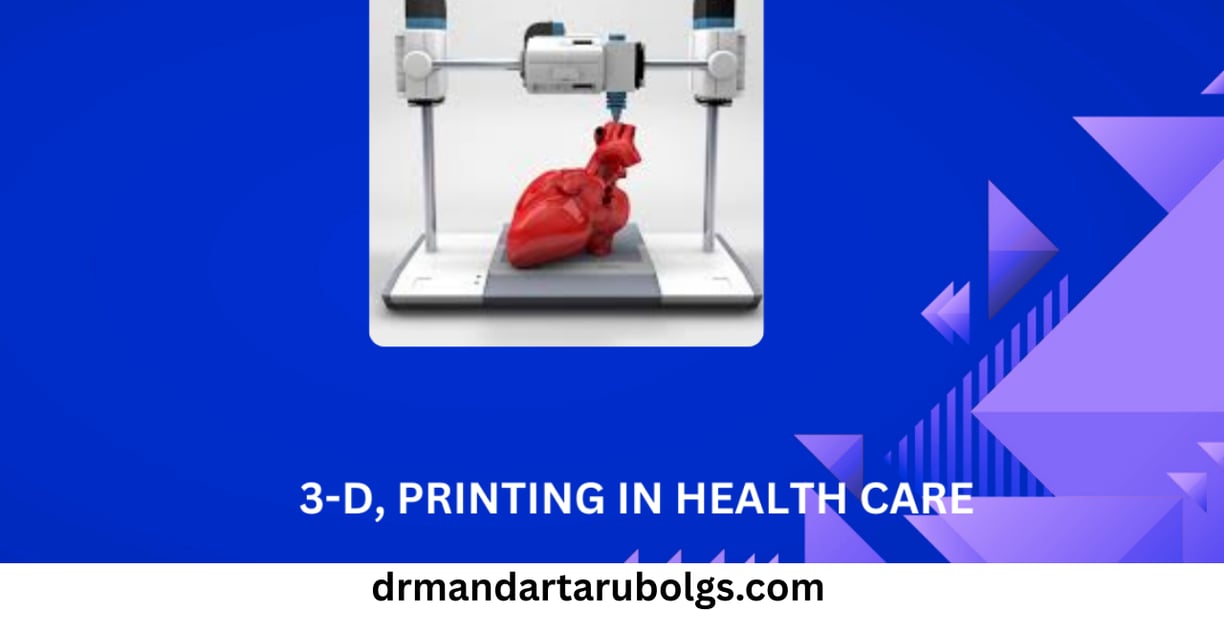

3D printing, or additive manufacturing,
, is revolutionizing healthcare by enabling the creation of personalized medical devices, surgical models, and prosthetics, leading to improved patient outcomes and faster, more efficient treatments.
Here's a more detailed look at the applications of 3D printing in healthcare:
1. Surgical Planning and Training:
Anatomical Models:
3D printing allows for the creation of highly accurate, patient-specific anatomical models from medical imaging data (CT scans, MRIs).
Pre-Surgical Planning:
Surgeons can use these models to visualize complex anatomical structures, plan surgical procedures, and rehearse techniques before entering the operating room.
Training and Education:
3D printed models can be used to train medical students and surgeons on complex procedures, improving skills and outcomes.
Example:
A radiologist can create an exact replica of a patient's spine to help plan a surgery, or a dentist can scan a broken tooth to make a crown that fits precisely into the patient's mouth.
2. Medical Devices and Implants:
Custom Implants:
3D printing enables the creation of patient-specific implants, such as cranial plates, hip joints, and other orthopedic implants, that perfectly match a patient's anatomy.
Prosthetics:
3D printing is used to create comfortable, affordable prostheses that match a patient's unique anatomy.
Surgical Guides:
3D printed guides can assist surgeons with proper surgical placement of devices.
Example:
3D printed prosthetics for limbs, cranial implants, or orthopedic implants such as hips and knees.
3. Dental Applications:
Custom Dental Restorations:
3D printing is used to create crowns, bridges, and other dental restorations that fit precisely.
Clear Aligners:
3D printing is used to manufacture clear aligners, invisible devices that straighten teeth.
Surgical Guides:
3D printed guides can assist dentists with proper placement of implants and other procedures.
4. Other Applications:
Rapid Prototyping:
3D printing allows for the rapid creation of prototypes of medical devices and components.
Personalized Medicine:
3D printing enables the creation of patient-specific medical models and custom-made single or multiple-drug tablets.
Research and Development:
3D printing is used in research to create models of tissues, organs, and other biological structures.
Bioprinting:
Research is ongoing in using 3D printing to create living tissues and organs, with the potential to revolutionize organ transplantation.
Wearable smart watches & impact on health care.

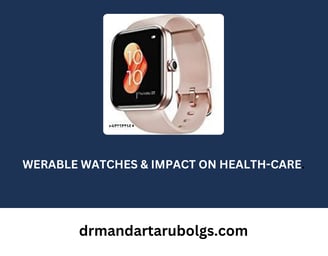
Wearable smart watches can be considered a boon to healthcare technology
. It provides patient monitoring, diagnosis and assistance with treatment.
It is capable of monitoring blood pressure, Oxygen saturation, heartbeats, pulse rate, sleep habits, physical activities, etc.
It can also be used as an alarm for daily habits like exercises, taking medicines etc.
It can track physical activities like daily step counter, location. There is little uncertainty that wearable advancements are entering our lives, particularly among early adopters.
Various organizations have put resources into creating wearable with novel functionalities to gain effective access into buyer markets.
The wrist is the convenient place to display all vital information as the arm moves several times compared to all other body parts so it is able to trace all the motions of the body and also, the wrist has veins and arteries to measure pulse, and the skin is thin enough for sensors to detect blood pressure.
A smart watch can be characterized as a portable electronic gadget worn as an adornment or inconspicuously implanted in the client's clothing. For the most part, wearable gadgets embrace the advances of modern biosensors and remote information correspondence that permit the wearer to get to and send data in all areas of human undertaking.
Given the usefulness of scaled down biosensors equipped for remote correspondence, these gadgets are created to be imaginative, non-obtrusive observing innovations for ceaseless and independent transmission of physiological information.
As these wearable gadgets multiply in the clinical area, they can possibly give parental figures the data they need to work on the nature of medical care, change and work with clinical work process, oversee and treat patients distantly, gather more prominent wellbeing information, and convey more significant medical care to patients.
For functional use, Zhang's examination bunch noticed a few key factors that ought to be created to carry out wearable gadgets, including scaling down, reconciliation, systems administration, digitalization, and normalization.
A new appearance to the quickly developing business sector of wearable gadgets is the savvy. With its scaled down structure factor plan and figuring innovation, a savvy can be worn persistently without intruding on the client's everyday movement.
With the potential for boundless reception in the medical care area, savvy watches outfitted with biosensors can possibly give significant medical services data to patients and their supplier
From the COVID-19 pandemic, we have understood that assuming healthcare frameworks had sped up the reception of innovation accessible throughout recent years, the magnitude of the current pandemic would probably have been significantly less extreme. As of now, we observe there are now numerous smartwatches available; various arrangements are at the trying stage, and various wearables have been proposed by specialists.
Conclusion For the smart watch to acquire wide acknowledgment by health experts, thorough examination on their precision, culmination, and impact on work process ought to be directed before smart watch applications are coordinated into healthcare industry. Client studies to examine ideal usefulness, UI plan, and ease of use for an assortment of clinical and patient settings are required. Further exploration is needed to comprehend the effect of savvy applications on clinical practice. Generally, the smartwatch and its clinical applications stays invigorating yet doubtful.
At present, the innovation has all the earmarks of being protected, fills in as promoted, and connects with patients outside of the normal patient-supplier office experience. While there are legitimate worries about adding new surges of clinical data of indistinct advantage onto currently overburdened jobs notwithstanding worries about information security and protection, doctors need to get ready for an undeniably associated insight with patients and their information.
Smart bandages in health care.

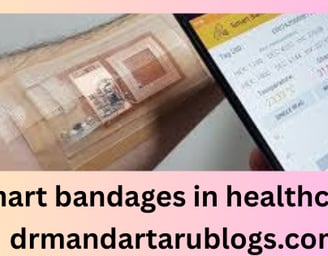
Chronic non-healing wounds are major healthcare challenges that affect a significant number of people; they exert a severe financial burden and are the leading cause of limb amputation.
Although chronic wounds are locked in a persisting inflamed state, they are dynamic and proper therapy requires identifying abnormalities, administering proper drugs and growth factors, and modulating the conditions of the environment.
Smart bandages could be drug delivery tools that have been integrated with bandages to facilitate precise temporal and spatial control over drug release and review automated or semi-automated systems that can respond to the wound environment.
Smart bandages are advanced wound dressings that can monitor wound conditions, deliver targeted treatments, and accelerate healing. They use sensors to measure parameters like temperature, pH, and biomarkers, and can deliver medication or electrical stimulation based on real-time feedback. This allows for more precise and efficient wound care, potentially reducing healing time and complications.
Real-time Monitoring:
Smart bandages utilize sensors to continuously monitor various wound parameters, including temperature, pH, moisture levels, and the presence of bacteria or inflammatory markers.
Targeted Treatment:
Based on the sensor data, smart bandages can deliver specific treatments, such as medication release or electrical stimulation, to optimize the healing process.
Wireless Data Transmission:
Many smart bandages can wirelessly transmit data to a smartphone or computer, enabling remote monitoring and tracking of wound healing progress.
Closed-Loop Systems:
Some smart bandages are designed as closed-loop systems, where the device automatically adjusts treatment based on real-time feedback, ensuring optimal healing conditions.
Accelerated Healing:
By providing the right treatment at the right time, smart bandages can potentially accelerate wound healing and reduce the risk of complications.
Improved Accuracy:
Smart bandages provide more precise and objective information about the wound compared to traditional visual inspection.
Reduced Healing Time:
By optimizing the healing environment and providing targeted treatments, smart bandages can potentially reduce the time it takes for a wound to heal.
Minimized Complications:
Real-time monitoring and targeted treatment can help prevent or mitigate complications like infection.
Reduced Healthcare Costs:
By accelerating healing and preventing complications, smart bandages can potentially reduce the overall cost of wound care.
Enhanced Patient Comfort:
Smart bandages can be more comfortable and convenient for patients than traditional bandages, especially those with chronic wounds.
Platelet-Rich Plasma (PRP) therapy
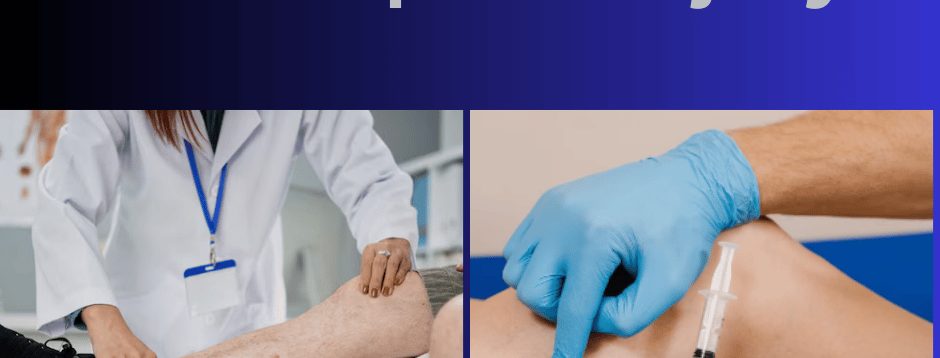

Platelet-Rich Plasma (PRP) therapy is a regenerative medicine technique that uses a patient's own blood to accelerate healing in injured tissues. Here's how it works and its role in treating sports injuries:
How PRP Treatment Works
Blood Collection: A small amount of your blood is drawn, similar to a routine blood test.
Centrifugation: The blood1 sample is placed in a centrifuge, a machine that spins at high speed to separate the blood components. This process isolates the platelets2 from other blood cells.
PRP Preparation: The concentrated platelets, now rich in growth factors and proteins, are extracted and prepared for injection.
Injection: The PRP is injected directly into the injured area. Ultrasound guidance is often used to ensure precise placement of the injection.
The concentrated platelets release growth factors that stimulate the body's natural healing processes, helping to repair damaged tissues like tendons, ligaments, muscles, and joints.
Applications in Sports Injuries
PRP injections are considered for various sports-related injuries, particularly soft tissue injuries that typically have poor healing capabilities. These include:
Tendon injuries: Tennis elbow, golfer's elbow, Achilles tendonitis, patellar tendinopathy (jumper's knee). PRP can stimulate collagen synthesis and tendon healing.
Ligament sprains and tears: Such as anterior cruciate ligament (ACL) injuries, often used in conjunction with surgical repair to aid healing.
Muscle strains and tears: PRP can accelerate muscle fiber regeneration and reduce inflammation.
Other musculoskeletal conditions: Some studies suggest potential benefits for rotator cuff tears and osteoarthritis, although results are still mixed.
Potential Benefits for Athletes
Accelerated Healing: PRP may speed up the recovery process by delivering a high concentration of growth factors directly to the injury site.
Reduced Inflammation: The anti-inflammatory properties of PRP can help reduce pain and create a healthier environment for tissue repair.
Improved Tissue Regeneration: Growth factors in PRP can stimulate the production of new cells and enhance the repair of damaged tissues.
Minimally Invasive: PRP therapy is a non-surgical procedure, reducing the risks associated with surgery.
Autologous Treatment: Using the patient's own blood minimizes the risk of immune reactions or disease transmission.
Potential for Long-Lasting Results: While recovery may take time, some patients report more durable improvements compared to other treatments.
Recovery After PRP Treatment
Initial Phase (0-3 days): You may experience mild to moderate pain or discomfort at the injection site. Rest and limited use of the injected area are recommended, but gentle movement is often encouraged. Avoid anti-inflammatory medications as they may interfere with the PRP's effects.
Early Healing Phase (Several weeks): Pain relief and improved mobility may be noticeable within a few weeks. The full benefits of PRP treatment can take 2 to 6 weeks or even several months to manifest as the tissues heal.
Rehabilitation: Physical therapy is often recommended to support long-term healing and restore function. Gradual increase in activity and exercise is usually advised, avoiding strenuous activity for at least 2 weeks and more intense exercise for about 4 weeks. Return to full sports activity typically occurs around 2 months, with ongoing improvement possible for up to a year.
It's important to note that the effectiveness and recovery time can vary depending on the individual, the severity and type of injury, and other factors. Consulting with an experienced sports medicine physician is crucial to determine if PRP therapy is a suitable treatment option for your specific condition.
RPM- remote patient monitoring.
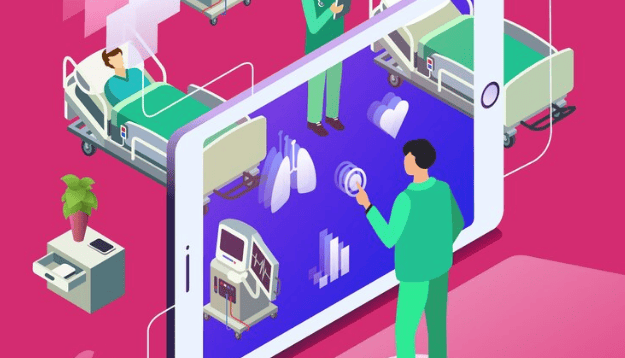

Remote patient monitoring (RPM) has shown promise in aiding safe and efficient remote care for chronic conditions; however, its use remains more limited within the hospital at home.
Hospital at Home model of care despite a significant opportunity to increase patient eligibility, improve safety, and decrease costs.
Hospital at Home, could achieve these goals by further adopting the 3 primary modalities of RPM (ie, vital sign, continuous single-lead electrocardiogram, and fall monitoring).
The use of vital sign RPM within Hospital at Home could better match the standard clinical practice of vital sign checks every 4-8 hours and enable safe care for appropriate moderate-acuity medical and surgical floor-level patients not traditionally enrolled in Hospital at Home.
Robust, efficient collection of more frequent vital signs via RPM could expand patient eligibility for Hospital at Home and create a digital health safety net that enables high quality care.
An experiment, demonstrated that appropriate use of continuous single-lead electrocardiogram RPM can also expand Hospital at Home enrolment, particularly for patients with acute decompensated heart failure.
Through increasing enrolment of patients in Hospital at Home, RPM stands to enable more patients to reap the potential safety benefits of home hospitalization, including decreased rates of delirium and hospital-acquired infections, and better avoid aspects of posthospital syndrome.
Furthermore, instituting fall detection RPM allows care teams to further Hospital at Home patient safety during their episode of acute care and develop enhanced mitigation strategies to avoid falls post home hospitalization.
RPM also has the potential to assist Hospital at Home in achieving greater economies of scale and decreasing direct variable costs. By expanding Hospital at Home eligibility, RPM could enable Hospital at Home programs, which have traditionally operated under capacity, to care for a larger census and decrease allocated fixed costs per hospitalization.
Additionally, RPM for Hospital at Home could further optimize hybrid in-home and remote nurse or physician evaluations, decreasing costs on a per-episode basis by up to an estimated 3.5%. Overall, RPM holds great promise to increase patient eligibility and patient safety while decreasing costs. However, it is in its infancy in achieving its potential to advance the Hospital at Home model of care; further research and experience that inform operational and technical as well as policy considerations are needed.
